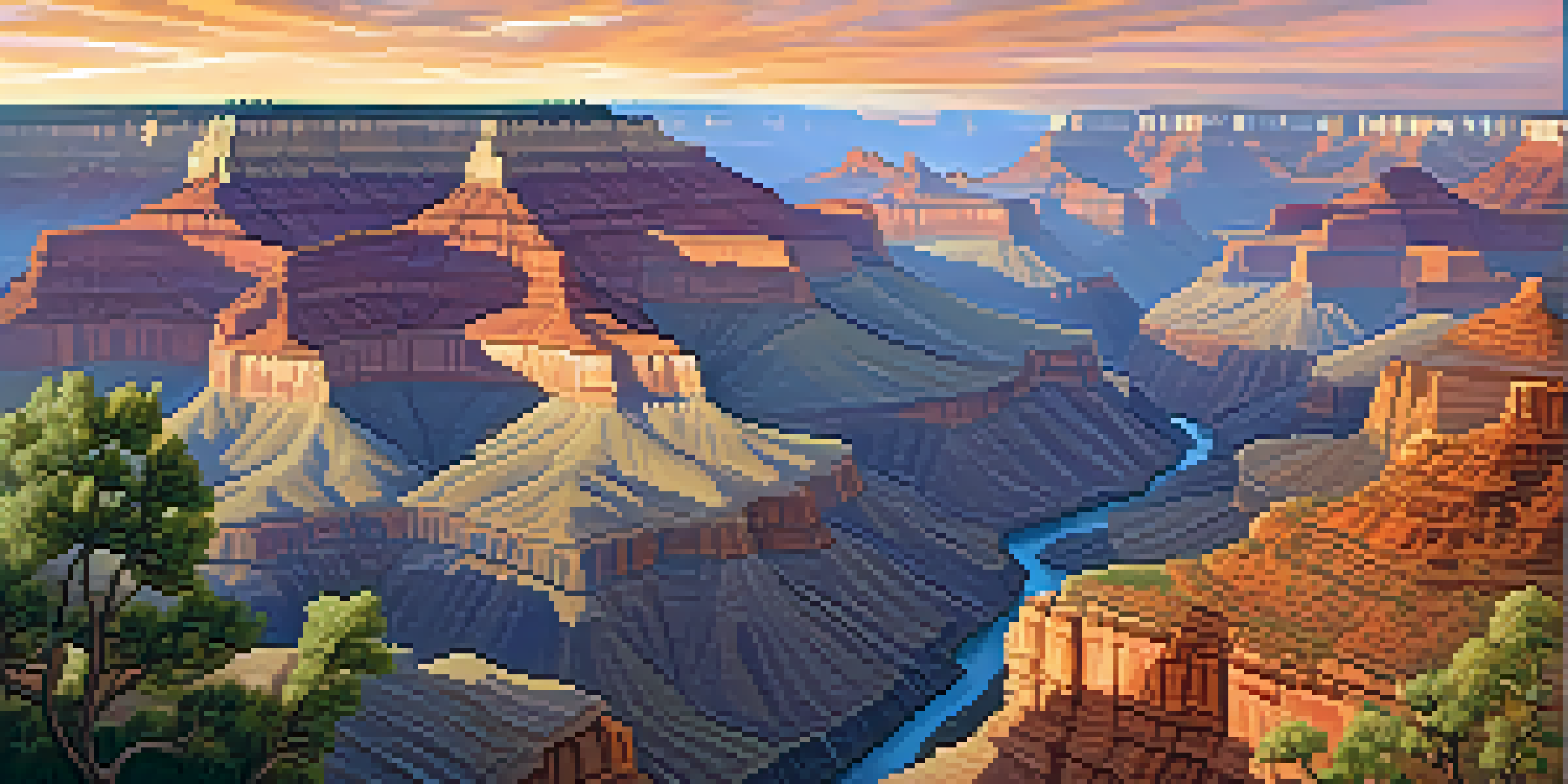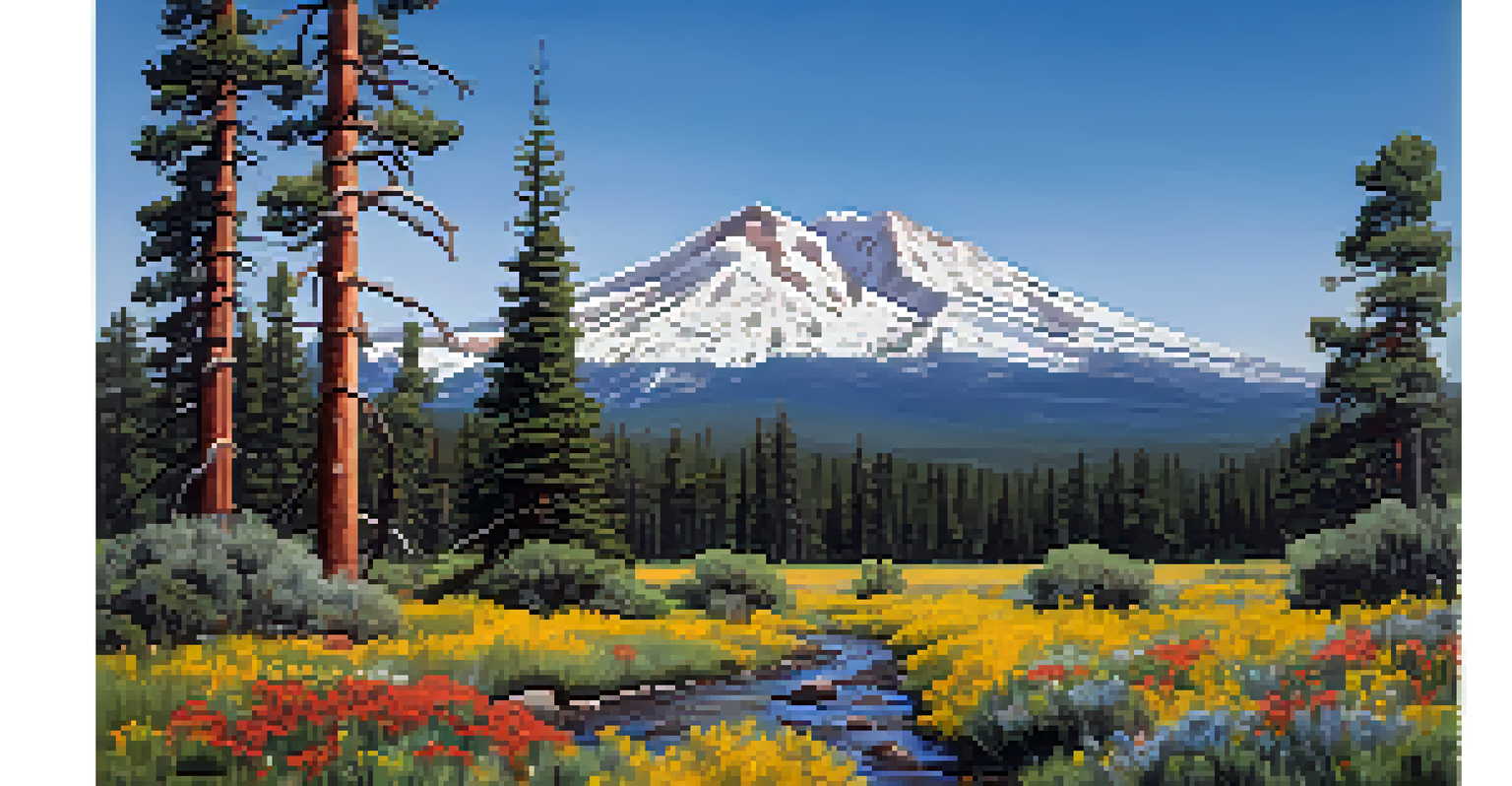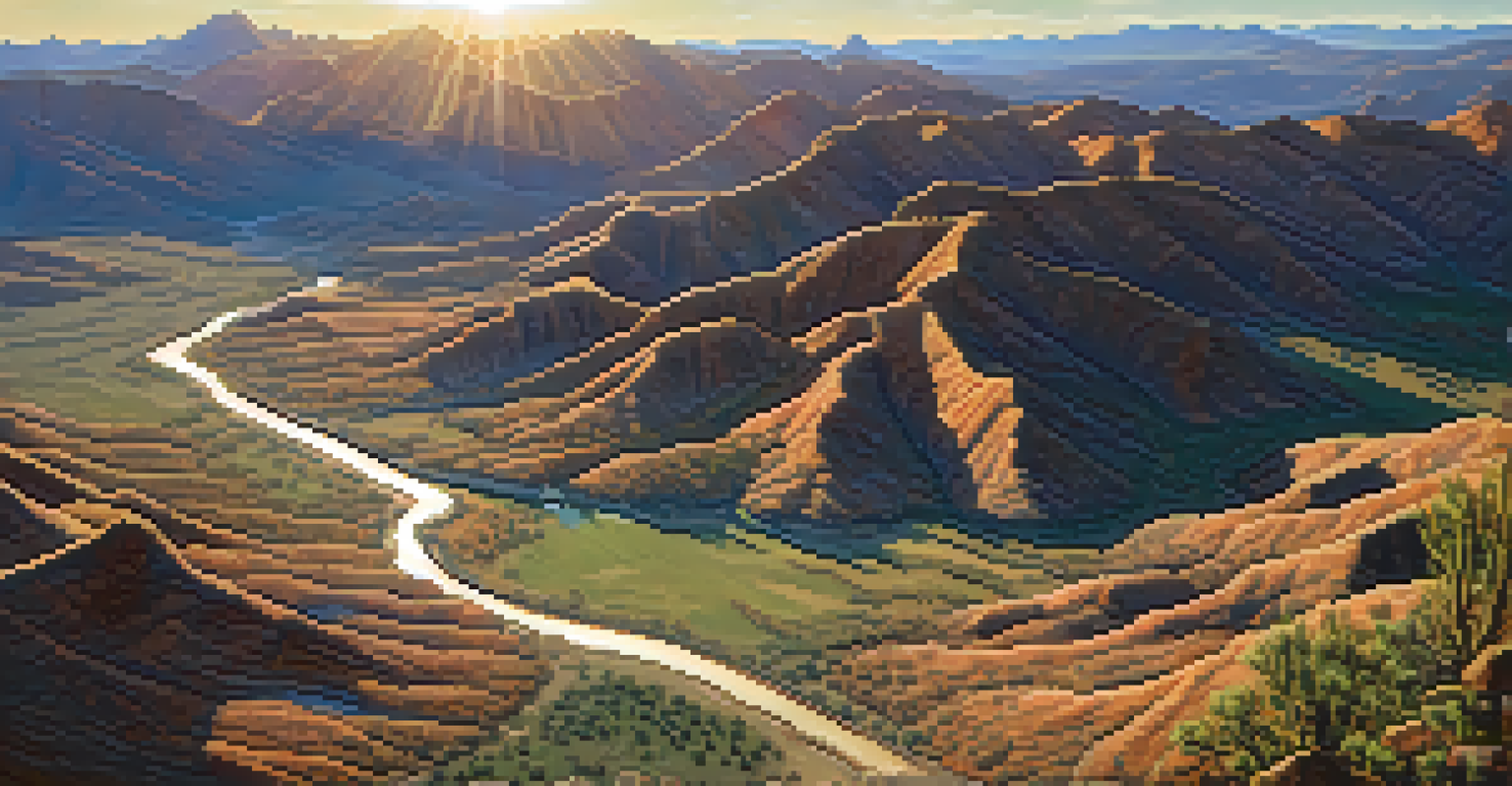The Importance of Tectonic Plates in Arizona's Geography

What Are Tectonic Plates and Their Role?
Tectonic plates are massive slabs of Earth's lithosphere that fit together like a jigsaw puzzle. These plates float on the semi-fluid asthenosphere beneath them, constantly moving, albeit very slowly. Their movement is responsible for various geological activities, such as earthquakes, volcanic eruptions, and the formation of mountains.
The Earth is a complex system of interconnected parts. Understanding tectonic plates helps us understand how our planet works.
In Arizona, these tectonic movements have played a crucial role in shaping the state’s diverse landscapes. From the majestic Grand Canyon to the volcanic fields in the north, the influence of tectonic activity is evident. Understanding tectonic plates is essential for grasping how these unique geographical features came to be.
Moreover, tectonic plates interact with each other at their boundaries, leading to different geological phenomena. For instance, the collision of plates can create mountain ranges, while divergent boundaries can result in rift valleys. Arizona's location relative to these tectonic activities contributes significantly to its varied geography.
Arizona's Geological Features Shaped by Tectonic Activity
Arizona is home to some striking geological features, many of which are direct results of tectonic plate movements. The Grand Canyon, one of the Seven Natural Wonders of the World, showcases layers of sedimentary rock that have been exposed due to erosion and tectonic uplift. This natural marvel is a testament to the Earth’s dynamic processes over millions of years.

In the northern part of Arizona, the San Francisco Peaks stand as a reminder of volcanic activity influenced by tectonic movements. These peaks are remnants of a once-active volcano that erupted due to the shifting of tectonic plates. Such geological landmarks serve not only as tourist attractions but also as vital indicators of the region's geological history.
Tectonic Plates Shape Arizona's Landscape
The movement of tectonic plates is responsible for Arizona's diverse geological features, including the Grand Canyon and the San Francisco Peaks.
Additionally, the Basin and Range Province, which covers much of Arizona, exemplifies tectonic extension. Here, the landscape is characterized by alternating mountain ranges and valleys, formed as the Earth's crust stretched and thinned. This unique topography is a direct result of the tectonic forces shaping the region.
Earthquakes in Arizona: A Tectonic Perspective
While Arizona may not be as earthquake-prone as California, it still experiences seismic activity due to its tectonic setting. The state lies near the boundary of the North American Plate and several smaller plates, making it susceptible to occasional quakes. Understanding the tectonic origins of these earthquakes can help residents prepare and respond effectively.
The movement of tectonic plates not only shapes our landscapes but also influences our natural resources and climate patterns.
Some of the most notable seismic events have occurred in the northern regions, where the movement of the Earth's crust is more pronounced. For example, the 1993 earthquake near the town of Littlefield reminded many Arizona residents of the potential for tectonic activity. Such events underscore the importance of being aware of geological risks, even in less active regions.
Moreover, monitoring and studying these earthquakes can provide valuable insights into the behavior of tectonic plates in the area. By understanding the patterns and causes of seismic activity, scientists can better predict potential future events, enhancing safety measures for communities across the state.
Volcanic Activity and Its Connection to Tectonic Plates
Arizona’s volcanic history is closely linked to its tectonic activity, particularly in the northern part of the state. The San Francisco Peaks, as mentioned earlier, are the remnants of a volcano that erupted due to tectonic forces. This area serves as a fascinating case study of how tectonic movements can lead to volcanic formations.
Volcanic fields, such as the Sunset Crater Volcano National Monument, showcase the explosive nature of these geological processes. These sites not only provide insights into the Earth’s inner workings but also attract visitors eager to witness the raw power of nature. The interaction between tectonic plates and magma beneath the surface creates these incredible volcanic landscapes.
Seismic Activity in Arizona
Arizona experiences occasional earthquakes due to its location near tectonic plate boundaries, highlighting the need for awareness and preparedness.
Additionally, understanding volcanic activity in Arizona can help scientists predict future eruptions. By studying the geological history and current tectonic movements, researchers can identify patterns that may indicate potential volcanic threats. This knowledge is crucial for ensuring public safety and preserving the region's natural beauty.
The Impact of Tectonic Plates on Arizona's Natural Resources
Tectonic activity in Arizona has significantly influenced the availability of natural resources in the state. The movement of tectonic plates can lead to the formation of mineral deposits, making Arizona rich in resources like copper, silver, and gold. These minerals are often found in areas where tectonic processes have exposed or concentrated them.
The mining industry in Arizona has historically thrived due to these geological advantages. For example, the famous Copper Queen Mine in Bisbee is a direct result of the tectonic forces that shaped the region. Understanding the relationship between tectonic activity and resource distribution can help in managing and utilizing these resources sustainably.
Moreover, the interplay between tectonic plates and natural resources extends to groundwater availability. The geological formations created by tectonic movements can influence aquifer locations, impacting water accessibility for agriculture and cities. This connection highlights the importance of tectonic studies for resource management in Arizona.
Tectonic Plates and Climate Patterns in Arizona
While it may not be immediately obvious, tectonic plates also play a role in influencing climate patterns in Arizona. The state's diverse topography, shaped by tectonic activity, affects local weather systems and microclimates. For instance, higher elevations in the San Francisco Peaks can experience significantly different weather compared to the surrounding lowlands.
Mountain ranges formed by tectonic uplift can act as barriers to prevailing winds, leading to variations in precipitation. This phenomenon is evident in Arizona, where the lush forests of the north contrast with the arid deserts of the south. The interplay between topography and climate is a fascinating aspect of how tectonic forces shape more than just the land.
Volcanic History Influenced by Tectonics
The state's volcanic formations, such as the San Francisco Peaks and Sunset Crater, are direct results of tectonic activity and provide insights into Earth's geological processes.
Additionally, understanding these climate patterns can help in predicting agricultural outcomes and water resource management. By studying how tectonic features influence local climates, researchers can develop strategies to optimize farming practices and conserve water in this arid region.
Future Implications of Tectonic Activity in Arizona
Looking ahead, the ongoing movement of tectonic plates in Arizona raises questions about future geological changes. As these plates continue to shift, the landscape will inevitably evolve, potentially leading to new geological features. This dynamic nature of the Earth’s crust reminds us that our environment is always in flux.
Moreover, understanding tectonic activity is crucial for urban planning and infrastructure development. Areas prone to seismic activity require careful consideration when designing buildings and roads to ensure safety. As cities expand, being aware of tectonic influences can help mitigate risks associated with earthquakes and other geological events.

Finally, continued research on Arizona's tectonic activity will provide valuable insights into not just the state’s geography but also broader geological processes. By studying these movements, scientists can contribute to our understanding of plate tectonics globally, fostering a greater appreciation for the Earth’s intricate systems.